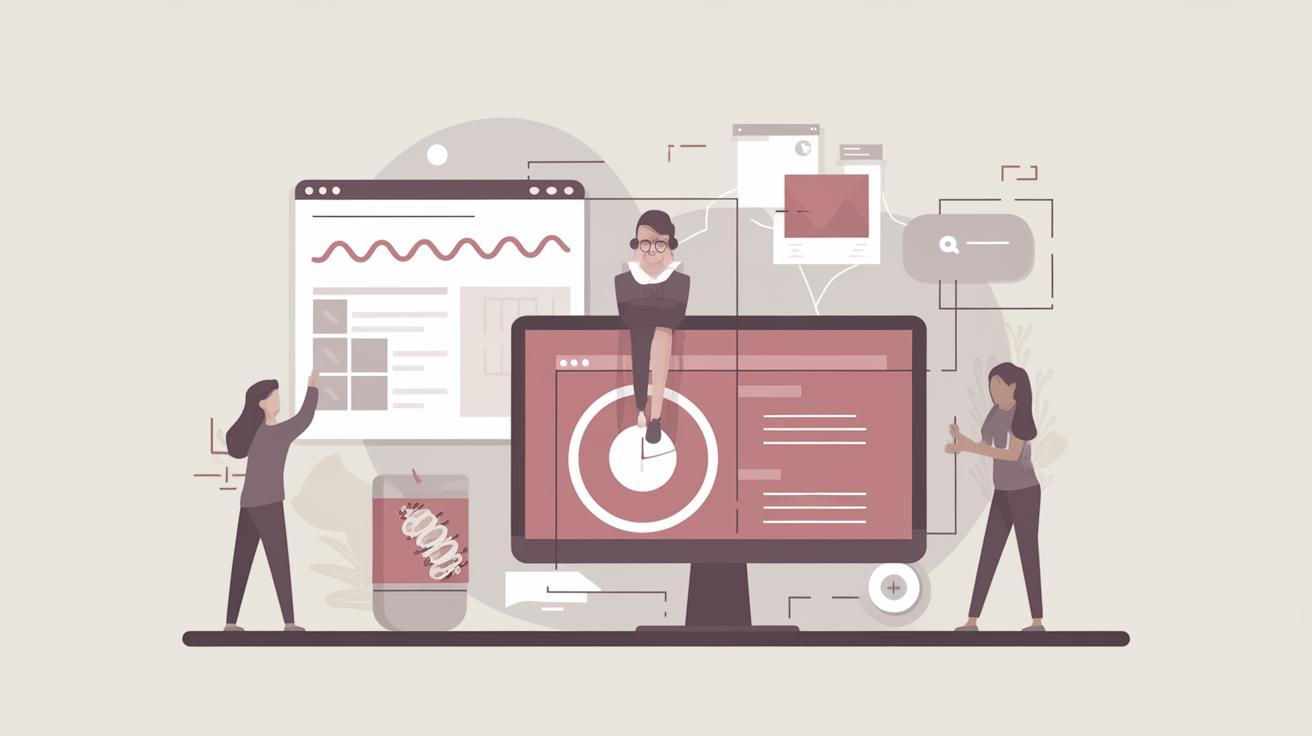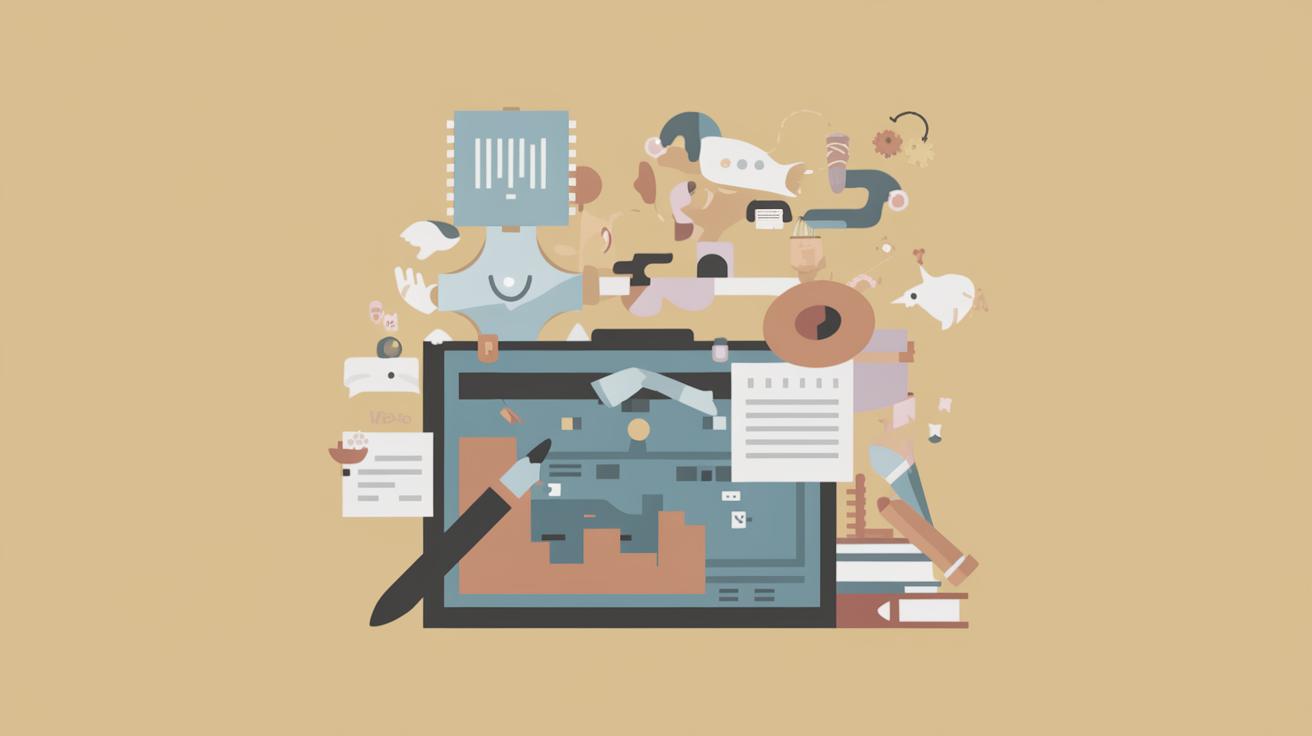The Fundamentals of User Experience Design
User Experience (UX) design is at the heart of creating meaningful interactions between users and products. Understanding its fundamentals can dramatically improve the way products are designed, leading to increased customer satisfaction, loyalty, and business success. In this blog post, we’ll delve into what UX is, explore the core principles that guide successful UX design, and examine the critical roles and processes that UX designers engage in. Furthermore, we will highlight the benefits of investing in quality UX design and provide actionable next steps. Whether you are a budding designer, a business looking to enhance your digital products, or simply curious about the field, this guide is for you.
1. What is UX?
User Experience (UX) refers to the overall experience a person has while interacting with a product or service. It is not confined solely to digital products; rather, UX design considers the entire journey from a user’s initial perception through interaction, leading to post-engagement reflections. It’s about how users feel and how easily they can achieve their goals when using a product.
Good UX design is crucial in today’s digital landscape as it strives to deliver solutions that enhance both usability and pleasure of interaction. It addresses users’ needs and anticipates potential challenges, delivering an experience that aligns perfectly with user expectations. By prioritizing UX, designers aim to create intuitive, efficient, and enjoyable experiences that facilitate long-term engagement.
2. The Five Main Principles of UX Design
Empathy
Empathy is the cornerstone of UX design. It involves understanding the user’s needs, feelings, and world views to create products that offer genuine solutions to real problems. Designers must step into the user’s shoes, capturing insights about their concerns and preferences. This enables the creation of user-centric designs that resonate with the target audience.
Achieving empathy begins with thorough research, involving interviews, surveys, and observations of user behavior. Gaining these insights helps designers build personas and user journeys that reflect authentic user needs and desires, leading to products that truly connect with users on a personal level.
Strategy
Strategy in UX design involves aligning the user’s needs with the business goals of the product. It’s about finding a sweet spot where user satisfaction meets business success. A well-thought-out strategy ensures that design decisions are guided by user research while considering the larger business objectives.
Developing a UX strategy includes defining clear goals, establishing key performance indicators (KPIs), and mapping out the user journey. The strategy acts as a blueprint for design and development teams, ensuring that every aspect of the UX design process is informed by purposeful decisions aimed at achieving measurable outcomes.
Usability
Usability is a fundamental principle that ensures products are intuitive and easy to use. It concerns how effectively users can navigate a product to achieve their desired outcomes. A usable product reduces confusion, minimizes errors, and promotes efficiency.
Critical factors impacting usability include information architecture, navigation, accessibility, and error management. Usability testing helps identify potential friction points, allowing designers to refine features to better support user needs, ultimately leading to a smoother user experience.
Inclusivity
Inclusivity in UX design emphasizes creating experiences that cater to a diverse audience, regardless of their abilities, ages, genders, cultures, or backgrounds. An inclusive design ensures that a product is not only accessible but also equally delightful for everybody.
Designers implement inclusivity by adhering to accessibility standards, such as the Web Content Accessibility Guidelines (WCAG), and considering diverse user needs throughout the design process. This approach broadens the product’s reach and enhances its appeal across various demographic segments.
Validation
Validation involves rigorous testing and feedback-driven iterations to confirm that a design meets user and business needs. It is a continuous process that ensures initial assumptions are challenged and refined through user feedback.
By conducting usability tests, A/B tests, and gathering customer feedback, designers gain valuable insights to refine and optimize the product. Validation is critical to achieving excellence as it breeds confidence in design decisions and facilitates the evolution of the product.
3. What Do UX Designers Do?
Empathize
UX designers begin by empathizing with users to gain a profound understanding of their needs and emotions. They immerse themselves in researching user behaviors, preferences, and pain points to inform every stage of the design process.
Methods such as interviews, surveys, and user observations lay the groundwork for effective and empathetic design. By capturing comprehensive user insights, designers can tailor solutions to fit the authentic needs and desires of their target audiences.
Define
Defining the problem is a critical step wherein UX designers synthesize research findings into a clear problem statement. This targeted focus allows designers to hone in on the true issues and establish design objectives.
The definition phase often involves creating personas and user journey maps that highlight user goals and challenges. A well-defined problem statement guides the design strategy, enabling efficient and user-focused solutions.
Ideate
Ideation is the creative phase where designers brainstorm potential solutions for the defined user problem. Through techniques such as sketching, storytelling, and mind mapping, designers explore a variety of ideas to address the user needs.
Diverse perspectives are invaluable during ideation, as they contribute to innovative problem-solving and a rich pool of creative solutions. By fostering an open-minded and collaborative environment, designers can generate concepts that offer unique value propositions.
Prototype
Prototyping transforms ideas into tangible interfaces, allowing designers to explore how concepts come to life. This phase involves creating interactive models that demonstrate functionality and design elements to users and stakeholders.
Prototypes can range from low-fidelity wireframes to fully interactive high-fidelity mockups. These iterations offer a critical opportunity to test ideas, spot potential issues, and refine designs before the final build.
Test
Testing is the evaluation phase where designers gather feedback to assess a prototype’s effectiveness in meeting user needs and expectations. It opens the door for further iterations and refinements.
Conducting thorough usability testing enables designers to identify usability issues, gauge user satisfaction, and validate design solutions. The insights acquired from testing drive data-informed decisions and optimized user experiences.
Then…Iterate!
The design process is inherently iterative, and UX projects rarely end after a single cycle. Iteration involves continually refining and enhancing designs based on testing and feedback, aiming for incremental improvements.
By embracing an iterative approach, designers remain agile, open to change, and committed to continuous enhancement. This approach leads to polished designs and well-optimized experiences that evolve with user feedback and changing requirements.
4. Benefits of UX Design (and UX Designers!)
Attention to UX Design Boosts Customer Acquisition and Retention
A remarkable UX design can significantly impact customer acquisition rates by offering users a delightful experience from the very first interaction. By meeting user expectations efficiently, businesses can foster trust and establish lasting relationships.
Investing in UX design also promotes customer retention by encouraging repeat engagements. A smooth, enjoyable user experience builds brand loyalty and tempts users back, potentially leading to advocates who promote the brand through word-of-mouth.
Good UX Maximizes Revenue
Companies that prioritize UX design report increased revenue generation. Good design reduces the risk of user drop-off and promotes seamless conversions, leading to a direct impact on the bottom line.
UX design optimizes the path to purchase, which minimizes hoops for users to jump through and enhances the appeal of products or services. When users can effortlessly engage and complete transactions, revenue naturally experiences a beneficial boost.
Great UX Designers Help Keep Development Costs in Check
Involving UX designers in the early stages of product development can prevent costly missteps. UX designers anticipate user needs, providing actionable feedback to development teams that prevent unnecessary rework and ensure efficient resource allocation.
Adjustments based on UX feedback are less expensive in early stages than post-launch corrections—saving time, resources, and budget. By proactively addressing user issues before production, businesses prudently manage their development expenses.
UX Designers Can Help Increase Company Productivity
Great UX design directly correlates with increased productivity within organizations. By streamlining workflows and minimizing interface complexities, UX designers enable employees to work more efficiently on digital platforms.
When internal systems are intuitive and aligned with staff needs, employee satisfaction improves, reducing frustration and enabling smoother operations. UX designers ensure that company tools promote productivity and reduce operational headaches.
Ultimately: UX Improves Users’ Quality of Life
Top-tier UX design enhances users’ quality of life by simplifying interactions and offering intuitive, valuable solutions to their problems. Users benefit from experiences that are not only functional but truly enjoyable.
By addressing pain points and designing with empathy, UX designers bridge the gap between user challenges and solutions. The outcomes are products that resonate more deeply with users, creating convenient and fulfilling interactions that positively impact everyday life.
5. What’s Next? Key Takeaways
What You Should Do Now
As we’ve explored, UX design’s holistic approach can lead to compelling user experiences with significant advantages for businesses and end users alike. Whether you’re a designer or stakeholder, the next step is to continually familiarize yourself with UX principles, engage in design thinking, and embrace the iterative process.
Stay knowledgeable about the latest UX trends and keep users at the heart of every design decision. By committing to constant learning and actionable feedback, you can ensure that your designs add value not only to users but also to the industry as a whole.
| Section | Summary |
|---|---|
| What is UX? | UX refers to the user’s overall experience with a product or service, aiming for intuitive and satisfying interactions. |
| The Five Main Principles of UX Design | Includes empathy, strategy, usability, inclusivity, and validation as foundational elements for effective design. |
| What Do UX Designers Do? | Designers empathize, define problems, ideate, prototype, test, and iterate to deliver user-focused solutions. |
| Benefits of UX Design | Enhances customer acquisition, boosts revenue, manages cost efficiencies, increases productivity, and improves user quality of life. |
| What’s Next? Key Takeaways | Advocates for continued learning, prioritizing user needs, and actively engaging in iterative design processes. |


